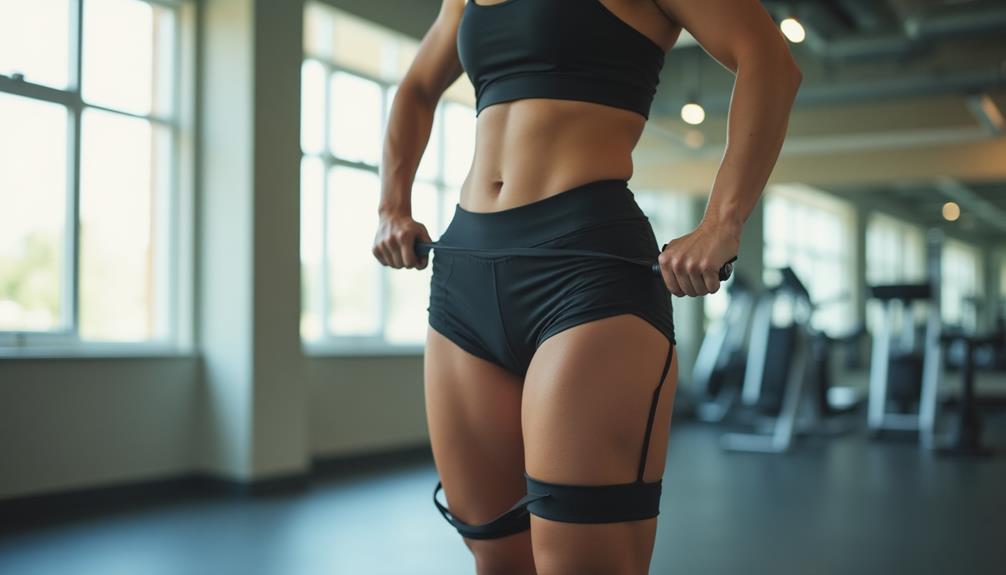To sculpt strong glutes with resistance training, focus on effective exercises like squats, hip thrusts, and glute bridges. These movements target all three glute muscles, maximizing strength. Using equipment like resistance bands, dumbbells, and barbells can enhance your workouts. Prioritize proper form by keeping your core engaged and ensuring your knees align with your toes. To promote muscle growth, maintain a balanced diet rich in protein and healthy fats. Also, track your progress through journal entries or measurements. By consistently applying these strategies, you can build strong glutes and improve your overall fitness level, paving the way for even greater results.
Core Insights
- Incorporate exercises like squats, hip thrusts, and glute bridges to effectively target all three glute muscles for optimal strength and sculpting.
- Use resistance bands, dumbbells, or kettlebells to add variable resistance and progressively overload your glutes during workouts.
- Maintain proper form by engaging your core, tracking knees in line with toes, and focusing on controlled movements to prevent injuries.
- Ensure a balanced diet with lean protein, healthy fats, and complex carbohydrates to support muscle growth and recovery after resistance training.
- Track progress through a workout journal, measurements, and strength gains to stay motivated and committed to your glute sculpting goals.
Benefits of Strong Glutes
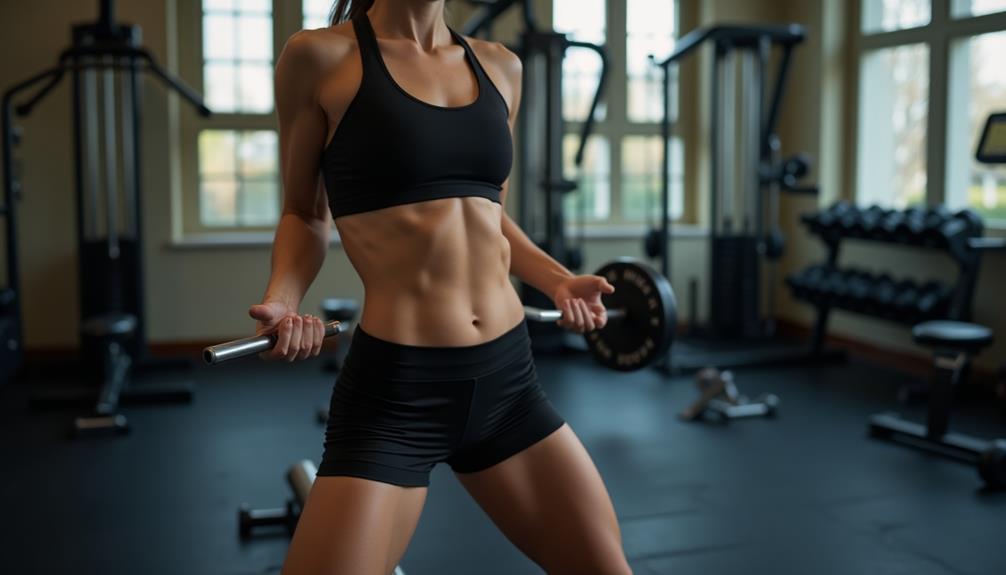
Strong glutes play an essential role in your overall fitness and well-being. They provide stability and support during various physical activities, from walking and running to lifting heavy objects. When your glutes are strong, you're less likely to experience lower back pain or injuries, as they help maintain proper posture and alignment. Incorporating resistance bands into your glute workouts can offer versatile and effective training options, allowing you to target different muscle fibers and intensities. These portable tools are perfect for home workouts or on-the-go fitness routines.
Moreover, strong glutes enhance athletic performance. They contribute to explosive power in sports, improving your speed and agility. You'll also notice an increase in endurance, allowing you to train harder and longer.
Additionally, strong glutes can improve your appearance, giving you a more toned and sculpted physique. Embracing glute-focused resistance training not only boosts your fitness but also enhances your confidence and overall quality of life.
Understanding Muscle Anatomy
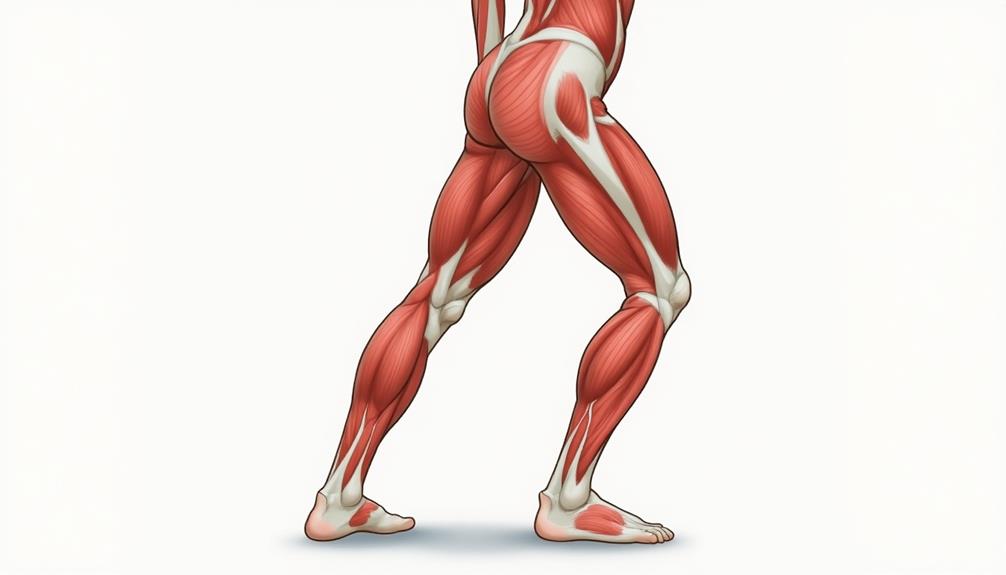
To effectively build strong glutes, it's important to understand the muscle anatomy involved. Your glutes consist of three primary muscles: the gluteus maximus, gluteus medius, and gluteus minimus. The gluteus maximus is the largest and most powerful muscle, responsible for hip extension and overall strength. The gluteus medius aids in hip stabilization and helps with lateral movements, while the gluteus minimus supports hip function and stability.
Understanding these muscles' roles helps you target them effectively during workouts. When you perform exercises like squats or lunges, you engage all three muscles. This knowledge empowers you to select the right movements to sculpt and strengthen your glutes, leading to better performance and aesthetics.
Essential Resistance Training Equipment

When you're ready to build strong glutes, having the right resistance training equipment makes all the difference. Start with a good set of resistance bands. They're versatile, portable, and perfect for various glute exercises. For a more inclusive workout solution, consider adding a TRX suspension system to your home gym. These systems offer full-body workouts and are incredibly portable, weighing less than a pound. Next, consider dumbbells or kettlebells. These weights allow you to progressively overload your muscles, which is key for growth. A barbell can also be a valuable addition, especially for squats and hip thrusts. If you have space, a squat rack is beneficial for safely performing heavier lifts. To conclude, a stability ball can enhance your workouts by engaging your core while targeting your glutes. By gathering this essential equipment, you'll set yourself up for success on your journey to sculpting strong, defined glutes.
Best Exercises for Glute Activation

Activating your glutes effectively can transform your workouts and enhance your overall strength. To get started, try the following exercises that focus on glute activation. Incorporating resistance tubes can add variable resistance to these exercises, allowing for progressive overload as you get stronger. These versatile tools are perfect for at-home or travel workouts due to their compact size and portability.
1. Glute Bridges: Lie on your back, knees bent. Lift your hips towards the ceiling, squeezing your glutes at the top.
2. Donkey Kicks: On all fours, lift one leg towards the ceiling, keeping your knee bent. Focus on contracting your glutes.
3. Clamshells: Lie on your side with knees bent. Keep your feet together and lift your top knee, engaging your glutes.
4. Squats: Stand with your feet shoulder-width apart. Lower your body as if sitting back in a chair, pushing through your heels to activate your glutes.
Incorporating these exercises will help you effectively target and activate your glutes.
Form and Technique Tips

Proper form and technique are essential for maximizing the effectiveness of your glute exercises and preventing injuries. First, always engage your core to stabilize your body. This helps maintain proper alignment during movements. When performing exercises, focus on controlled movements rather than rushing through reps. Slow, deliberate actions target the glutes more effectively.
Next, pay attention to your knees. They should track in line with your toes to avoid strain. Also, when using weights, choose a load that challenges you but allows you to maintain good form. Finally, don't forget to warm up and cool down. Stretching before and after your workouts promotes flexibility and aids recovery. By following these tips, you'll enhance your glute training experience.
Sample Glute Workout Routine

To build strong glutes effectively, incorporating a well-structured workout routine is essential. Here's a sample glute workout routine you can follow to target those muscles:
| Exercise | Sets | Reps |
|---|---|---|
| Barbell Hip Thrusts | 3 | 10-12 |
| Bulgarian Split Squats | 3 | 10-12 each leg |
| Glute Bridges | 3 | 12-15 |
| Deadlifts | 3 | 8-10 |
| Cable Kickbacks | 3 | 12-15 each leg |
Focus on maintaining proper form throughout each exercise. Rest for 30-60 seconds between sets, and adjust the weights according to your fitness level. This routine will help you sculpt and strengthen your glutes effectively.
Progressive Overload Strategies
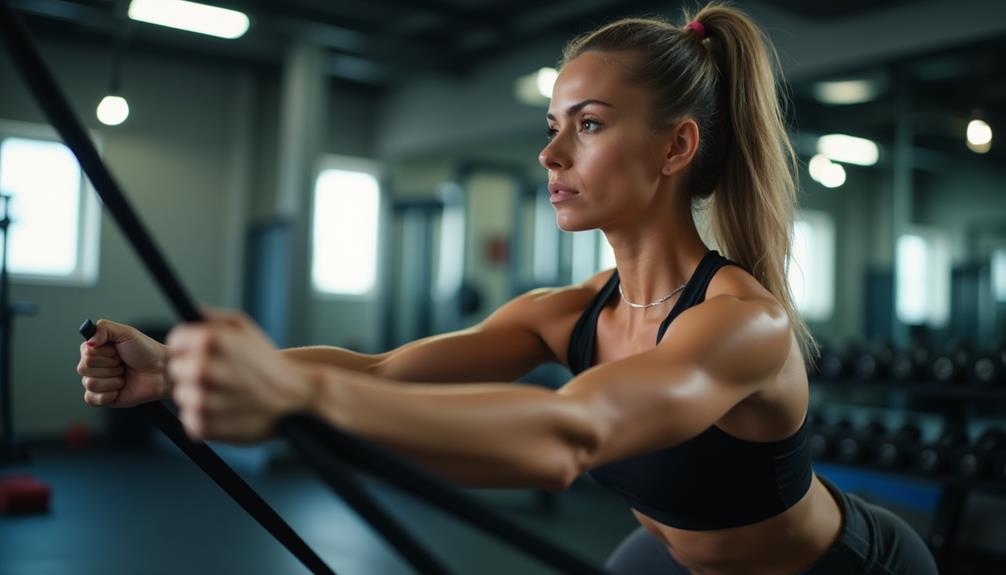
When it comes to building strong glutes, progressive overload is key. This strategy involves gradually increasing the demands on your muscles to promote growth. You can implement this by adding weight to your exercises, increasing the number of repetitions, or extending the duration of your workouts.
Start by tracking your workouts. Note your weights, sets, and reps. Each week, aim to add a small amount of weight or an extra rep.
Incorporate varied exercises, like squats, lunges, and hip thrusts, to challenge different muscle fibers.
Nutrition for Muscle Growth

Fueling your body with the right nutrients is essential for muscle growth, especially when targeting strong glutes. To optimize your results, consider these three key components:
- Protein: Aim for lean sources like chicken, fish, and legumes. Protein is essential for muscle repair and growth.
- Healthy Fats: Incorporate avocados, nuts, and olive oil into your diet. Healthy fats support hormone production, which plays a significant role in muscle development.
- Complex Carbohydrates: Choose whole grains, fruits, and vegetables. These provide the energy you need for effective workouts and recovery.
Common Mistakes to Avoid
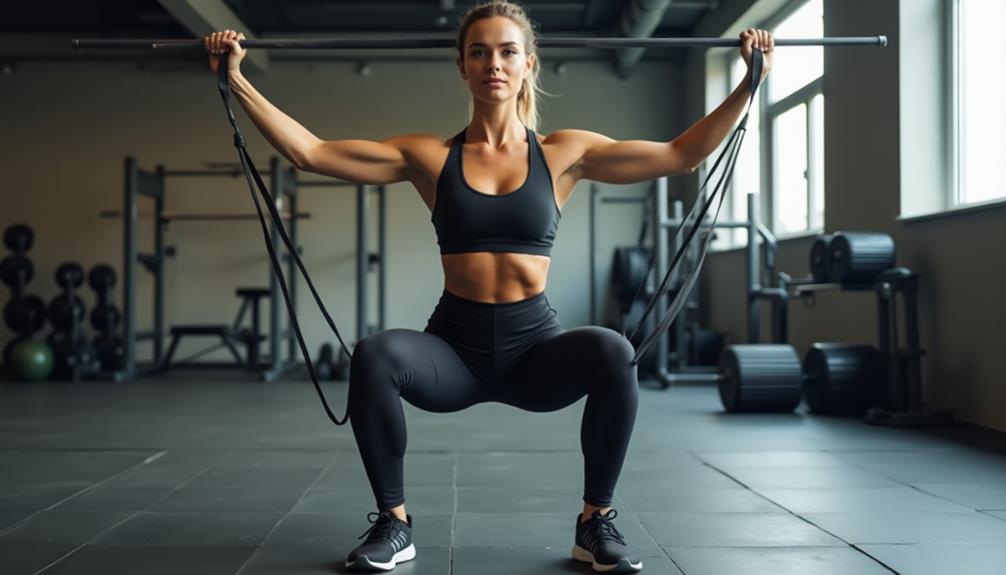
What mistakes are you making that could hinder your glute gains? Avoiding these common pitfalls will help you achieve stronger glutes more effectively.
| Mistake | Consequence |
|---|---|
| Neglecting form | Increased injury risk |
| Skipping warm-ups | Reduced muscle performance |
| Overtraining | Fatigue and burnout |
| Focusing only on squats | Imbalanced muscle development |
Focusing solely on one exercise, like squats, can limit your progress. Instead, incorporate a variety of movements. Prioritize proper form to prevent injuries, and always warm up before your workouts. Don't forget to rest, as overtraining can stall your progress. By sidestepping these mistakes, you'll create a solid foundation for sculpting strong glutes.
Tracking Your Progress
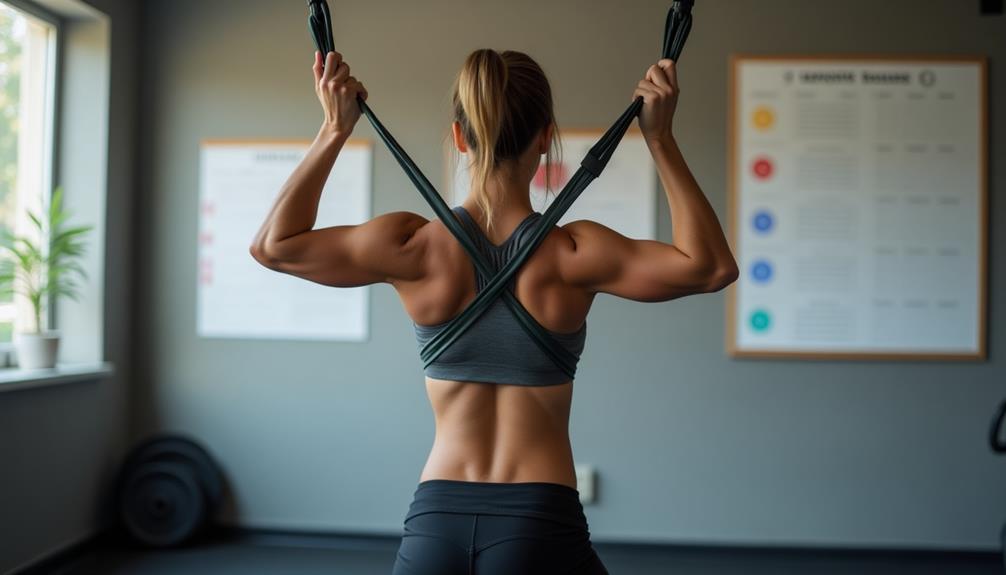
Tracking your progress is essential for building strong glutes and staying motivated. By keeping a close eye on your improvements, you can make informed adjustments to your workouts. Here are three effective ways to track your progress:
- Workout Journal: Write down your exercises, sets, reps, and weights. This helps you see how you're advancing over time.
- Progress Photos: Take photos every few weeks. Visual comparisons can reveal changes that numbers might not show.
- Measurements: Use a measuring tape to track the size of your glutes. Regular measurements can highlight growth and help you celebrate milestones.
Frequently Asked Questions
How Often Should I Train My Glutes Each Week?
You should train your glutes two to three times a week for best results. Make sure to vary your exercises and allow at least one rest day between sessions to promote recovery and muscle growth.
Can I Sculpt Glutes Without Weights?
Absolutely, you can sculpt your glutes without weights! Bodyweight exercises like squats, lunges, and glute bridges effectively target those muscles. Just stay consistent, focus on form, and increase repetitions for the best results.
What's the Best Time of Day to Train Glutes?
Timing's everything; think of training your glutes like catching the perfect wave. You'll find the best time is when you're most energized, whether it's morning, midday, or evening—just be consistent and listen to your body.
Should I Warm up Before Glute Workouts?
Yes, you should definitely warm up before glute workouts. Warming up increases blood flow, enhances flexibility, and prepares your muscles for the intensity ahead. You'll perform better and reduce your risk of injury.
Can I Do Glute Workouts at Home?
Can you really transform your glutes at home? Absolutely! With minimal equipment or even just your body weight, you can perform effective glute workouts. Just stay consistent and challenge yourself to see those results!

